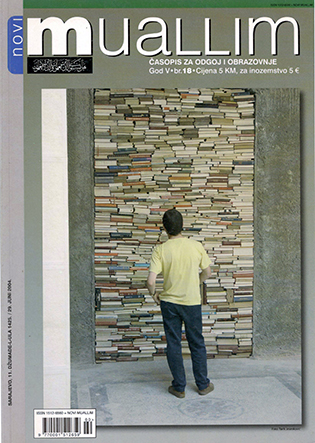ISLAMSKE ODGOJNO-OBRAZOVNE INSTITUCIJE U POVIJESTI GRADA TEŠNJA
DOI:
https://doi.org/10.26340/muallim.v5i18.1299Sažetak
.
Downloads
Objavljeno
06-08-2022
How to Cite
Fatić, A. (2022). ISLAMSKE ODGOJNO-OBRAZOVNE INSTITUCIJE U POVIJESTI GRADA TEŠNJA. Novi Muallim, 5(18), 88–95. https://doi.org/10.26340/muallim.v5i18.1299
Broj časopisa
Rubrika
HISTORIJA OBRAZOVANJA
License
Naknada:
a. Časopis ne naplaćuje naknadu za obradu članaka (APC) i naknadu za podnošenje članaka.
Autori koji objavljuju u ovom časopisu pristaju na sljedeće uvijete:
- Autori zadržavaju autorska prava i pružaju časopisu pravo prvog objavljivanja, pri čemu će rad jednu godinu po objavljivanju biti podložan licenci Creative Commons imenovanje koja omogućuje drugima da dijele rad uz uvijet navođenja autorstva i izvornog objavljivanja u ovom časopisu.
- Autori mogu izraditi zasebne, ugovorne aranžmane za ne-ekskluzivnu distribuciju rada objavljenog u časopisu (npr. postavljanje u institucionalni repozitorij ili objavljivanje u knjizi), uz navođenje da je rad izvorno objavljen u ovom časopisu.


